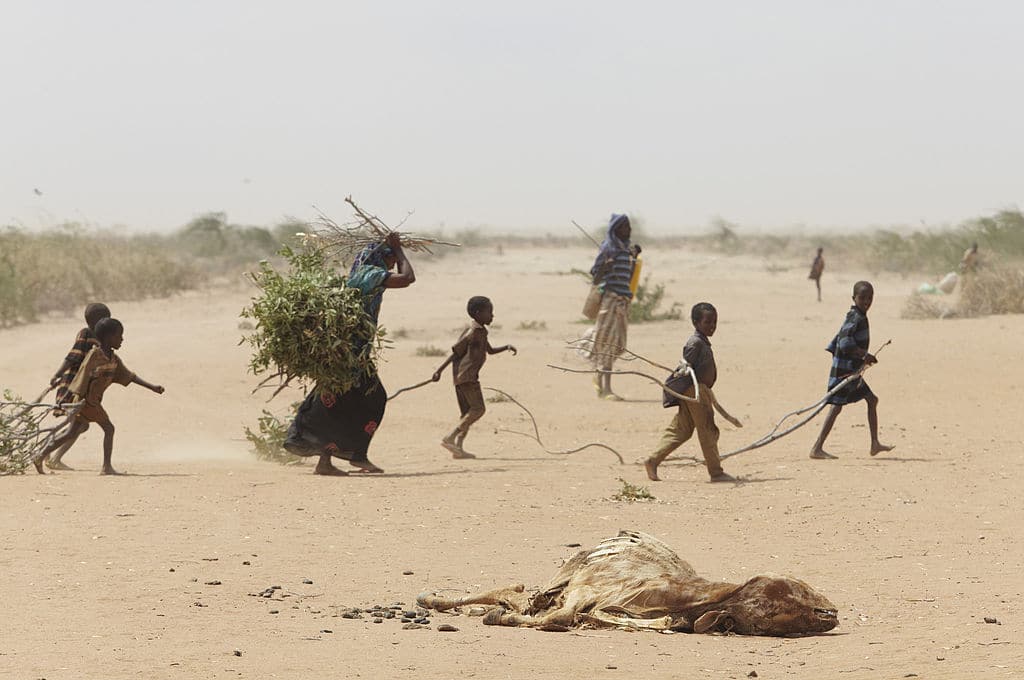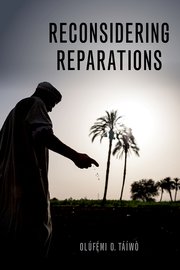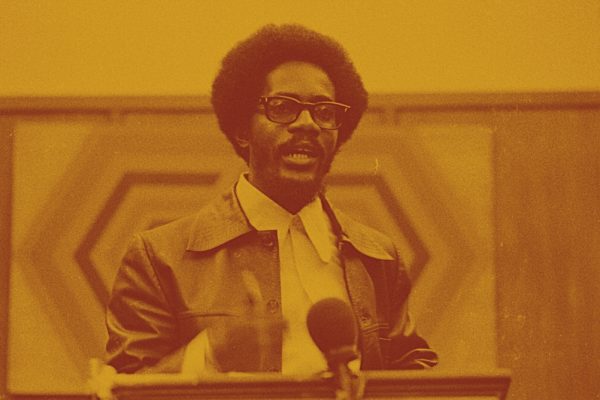Reparations have seen a resurgence of interest in recent years, stemming from a variety of sources. Perhaps most familiarly, Ta-Nehisi Coates’s influential 2014 essay in the Atlantic, “The Case for Reparations,” set off a firestorm of reactions across the political spectrum, culminating years later in a “historic” Congressional hearing in 2019. In the wake of George Floyd’s murder and the rebellions of 2020, reparations programs task forces have launched in the city of Detroit and state of California while a housing payment program launched in Evanston. And last year, House Resolution 40—introduced every year in Congress since John Conyers Jr. first introduced it in 1989, and calling for a commission to study reparations for slavery—finally passed through the Judiciary Committee for full consideration on the House floor.
But what exactly does the call for reparations demand, and what kind of political movement does it entail? The label has been applied to a vast array of different programs and policies, from direct cash payments to African Americans to symbolic apologies, creations of museums and sites of spiritual recognition, and academic studies about the nature of systemic racism. In a 2016 essay, political scientist Adolph Reed, Jr., took aim at this feature of the call for reparations, describing it as a blend of “material, symbolic, and psychological components.” Reed thinks this ambiguity is a liability, since elites can exploit the demand by choosing the version of reparations that is cheapest for them: the symbolic. More important, Reed contends, overinvestment in symbolic reparations could detract energy and resources from an alternative, preferable political project: “building broad solidarity across race, gender, and other identities around shared concerns of daily life” like “access to quality health care, the right to a decent and dignified livelihood, affordable housing, quality education for all.” Reed thus warns that the call for reparations for some distracts from a more worthy political project that would provide justice for all—an objection also voiced during the 2019 House hearing.
This essay is featured in Repair.
But what if the project for reparations was the project for “safer neighborhoods and better schools,” for a “less punitive justice system,” for “the right to a decent and dignified livelihood”? Responding to Reed in Dissent in 2019, African American studies scholar Keeanga-Yamahtta Taylor pointed out that the struggle to build a just social system can’t be won solely through “universal” programs addressing common problems. Taylor gives the example of the large disparity rate in maternal mortality between Black mothers and white mothers: the accumulated history of disparate and discriminatory treatment and policy means that not all of the relevant social problems are, in fact, common to both. To build a just health care system, we would have to address both lack of access due to unjust economic structures and lack of access due to unfair gender- and race-based discrimination. From the point of view of building a just health care system, these goals aren’t substitutes for each other; they are complementary.
Though it is less well elaborated in today’s popular debates, this understanding of reparations—one that sees it as central to the expansive project of building a more just world, not just as a material or symbolic mechanism of redress for past harms—has a long legacy. This vision is worth recovering and integrating with other important political movements today, above all the global struggle for climate justice.
There is ample footing, both in theory and in practice, for widening the scope of our conversations about reparations in this way. In his historical study of the Black radical imagination, Freedom Dreams (2002), historian Robin D. G. Kelley notes that the demand for reparations “was never entirely, or even primarily, about money.” Instead, it was
about social justice, reconciliation, reconstructing the internal life of black America, and eliminating institutional racism. This is why reparations proposals from black radical movements focus less on individual payments than on securing funds to build autonomous black institutions, improving community life, and in some cases establishing a homeland that will enable African Americans to develop a political economy geared more toward collective needs than toward accumulation.
This view—constructive in outlook and global in ambition—has a particularly useful antecedent in midcentury struggles for independence. As historian Adom Getachew shows in her recent book Worldmaking after Empire: The Rise and Fall of Self-Determination (2019), the wave of decolonization movements that crested toward the end of World War II forced new political questions onto the world stage. Prominent figures in the growing global anticolonial movement demanded the institutionalization of self-determination as a political principle of the United Nations, worked to form regional political blocs for mutual aid and uplift, and demanded a New International Economic Order with a different set of rules than the set that had emerged from the interaction of colonial domination and the capitalist economy that emerged from it: what I call “global racial empire.” They imagined new institutions, different relationships between countries, and also, crucially, the most recognizable aspect of reparations politics: redistribution of global wealth, from the First World (back) to the Third World.
These activists weren’t just fighting against the structures of colonial domination and racial apartheid; they were also trying to build a more just world on a planetary scale. Unfortunately, they did not succeed: the end of the Cold War, the disciplining of the newly independent states, and the corresponding defeat of radical politics around the globe produced struggles for justice that often set their sights much lower. But any politically serious reparations project—at least one fitting the goals and ethos of the constructive view—should build on this long and worthy tradition of “worldmaking.” It must include two elements, in particular.
First, it must be global in scope. This is not to deny the importance of national or regional struggles for reparations, from the United States to Caribbean nations’ CARICOM Reparations Commission, reparations projects formed on the African continent, and demands from Indigenous groups who have collaborated across their nations to push for redress of grievances. But slavery, colonialism, and the political structure they produced are global phenomena, and we need a global theoretical perspective on what could (and does) unite these separate political projects.
Second, and perhaps less obviously, a politically serious reparations project must focus on climate change. The connection between climate crisis, slavery, and colonialism flows from distributions of wealth and vulnerability created by centuries of global politics and its ecological consequences, layered with more recent histories of pollution in the Global North and corporate fossil fuel interests. As climate impacts accelerate, we can expect their burdens to fall disproportionately on those who have been rendered most vulnerable through the accumulated weight of such histories. Our response to climate crisis thus deeply constrains the possibilities for justice.
The historical connections between the climate crisis and our present systems of injustice help explain why a just future depends on reparations. Before the rise of global racial empire, different regions of the globe evolved in a fair degree of ecological isolation: ecological connections were constrained by the size and scope of relatively local human economic trade. The newly formed global racial empire exploded in the 1500s and stretched that trade across the Atlantic, Indian, and Pacific oceans, comprising what some scholars call the “Columbian exchange”: a historically unprecedented flow of plants, animals, and pathogens into environments that had never dealt with them before. The results were immediate and world-changing. The introduction of European pathogens alongside forms of colonial domination, especially the extensive slave trade in Indigenous populations, led to 56 million deaths in the Americas over the sixteenth century—so many that some scientists estimate that this “Great Dying” cooled the Earth. This was the first anthropogenic global climate event, setting the political stage for the Industrial Revolution. In addition to the unfathomable suffering and loss of life, this catastrophic depopulation of the Americas likely enabled the success of the European campaigns of imperial conquest.
When the Industrial Revolution followed centuries later, human production for the first time outpaced the natural constraints on growth. The British empire, where this process started, was already dominating key parts of the world, including much of the Indian subcontinent. These regimes of exploitation coincided with a crucial bit of geological luck: England had more available coal on its islands than competitors in Europe or South Asia. British industrialists developed techniques to extract and use coal energy to compete with the Indian producers, which lead to new forms of iron production and thus mechanization, crucially in the textile industry that converted cotton from the American South into clothing for the entire world. Coal-powered, mechanized production revolutionized British manufacture and the economic world, helping to complete its dominance as a colonial power. And this aspect of the global racial empire—industrialism—would transform the ecological world.
Although coal was overtaken by oil after the 1950s, the use of oil, coal, and other fossil fuels since the onset of the Industrial Revolution has sent billions of tons of carbon dioxide and other greenhouse gases into the atmosphere. The ecological ramifications of these carbon emissions are tremendous. If present trends continue, an estimated one in three humans will—as soon as 2070—be pushed out of the climate niche that our species has inhabited for millennia. In the Global South, sea level rise poses existential threat to the Pacific islands, Bangladesh, and the Nile delta, while drought and agricultural failure leave sub-Saharan Africa on a knife’s edge.
To be sure, some aspects of the distribution of climate impacts are purely geographical. Whether or not a family is affected by a hurricane or sea-level rise, for example, depends on how close they live to the ocean. But what matters for our commitment to justice is how these ecological phenomena affect people’s capabilities—the lives that they are or are not empowered to live. In some cases, these geographical variables are themselves deeply shaped by centuries of injustice rather than by personal choices. In other cases, differential distributions of wealth and power today will only exacerbate inequality in the future. Some people who retreat from a coastline will have access to money or credit to manage the financial costs of relocation, a passport or citizenship status that will widen their legal relocation options, and a social status that will make their new communities likely to welcome them. Many others will lack some or all of these advantages: they will be cash-poor and indebted, have a citizenship status that radically curtails their mobility, or a social status that draws stigma and violence. These outcomes aren’t purely geographical; they are shaped by our social and political arrangements.
We know that the costs and burdens of environmental catastrophe will be distributed in ways that echo the history of global racial empire because it is already happening. Researchers studying New York City have found that heatwave deaths and even the temperature itself was racially distributed: residents in areas with a larger proportion of white people were wealthier and benefited from the natural cooling of more vegetation as well as the artificial cooling of air conditioners. Meanwhile, what scientists call the “urban heat island effect” put inner-city residents at risk.
Climate crisis is also likely to lead to new social divisions between those advantaged enough to buy or coerce security from climate impacts and those who cannot. Researchers link recent violence between neighbors in Mali and Nigeria to resource conflicts exacerbated by climate-related desertification and other impacts. At a community, local, and national scale, we can expect police to protect the rich and socially well-positioned, often leaving vulnerable those on the business end of nightsticks or behind cell walls. We can also expect the balance of power between nation states and Indigenous communities to be shaped increasingly by forces of the same kind: the climate crisis is likely to shuffle increasing power and control into the hands of those in command of wealth, coercive force, or strategic resources.
Putting all this together, the lesson is clear: to understand how the climate crisis will interact with global racial empire’s distribution of advantages and disadvantages, we need to explore the distribution of specifically environmental risk and vulnerability. Various contested economic theories suggest mechanisms for why vulnerabilities are high in the formerly colonized parts of the world, but the distribution of environmental risk and vulnerability can be explained simply in terms of patterns of accumulation.
Accumulation is the result of distribution over time. If you and I both save ten cents of every dollar we earn over our working lives, we will both end up with accumulated savings by the time we retire. At small scales, the element of choice and responsibility matter: if we both make around the same amount of money from our jobs and have access to similarly consistent hours, then in the end the person with the most retirement funds will be the thriftiest or hardest working of the two of us. However, if I make minimum wage and you make seven figures a year, spending habits or willingness to tack on overtime shifts can never explain the difference between our retirement savings. The distribution of income in our working years, not our work habits, explains the different levels of accumulation we have when we retire. What we can do in our retirement age, how we are cared for, and what we leave to our heirs, likewise, are primarily determined by this distribution. The environmental risk and vulnerability facing countries and populations today emerges from several overlapping strands of political, cultural, and economic accumulation, which were largely set in motion generations ago.
In 2005, climate change researchers at the University of East Anglia created an index of eleven key indicators for vulnerability to climate change impacts: percentage of the population with access to sanitation, three measures of literacy rate (by different age groups and by gender), maternal mortality rate, typical caloric intake, civil liberties, political rights, government effectiveness, life expectancy at birth, and a measure of access to justice termed “voice and accountability.”
Such measures of climate vulnerability are a useful tool for the constructive view of reparations: what matters about the economy are the actual lives people are empowered to lead. And the measures clearly reveal that the colonizing parts of the world are now much less vulnerable to climate change than the regions they colonized. The measures thus reflect a simple lesson about how yesterday’s distribution affects tomorrow’s reality: heightened vulnerability to the incoming aspects of climate change correlates directly with greater deprivation in the status quo. In short, the rich get richer and the poor get poorer. It is not that every aspect of today’s global racial empire is rooted in the impacts of climate change—but every aspect of tomorrow’s global racial empire will be. Climate change will redistribute social advantages in a way that compounds and locks in the distributional injustices we have inherited from history.
In the face of these links, what should be done? We don’t have to agree on every aspect of the new world we are building to agree on ways to improve the justice of our current arrangements. At the same time, even in times of immense political opportunity, the possibilities for change are profoundly constrained by the balance of power we inherit from centuries past. As Frederick Douglass noted, “power concedes nothing without a demand.” It is thus imperative to issue clear demands. Here are some places we might start.
Unconditional Cash Transfers
Contemporary demands for reparations have rightly kept focus on this tactic. In stark contrast to the byzantine social support systems that have come to characterize modern social democracies, social scientists are beginning to embrace “unconditional cash transfers”—simply giving people money directly. These kinds of transfers will intervene directly in the patterns of accumulation, one of our most adaptable forms of social advantages. It also avoids the problems with other welfare programs: the sprawling (and questionably efficacious) overhead, the paternalistic attempts to further shape people’s incentives, and the “poverty traps” caused by aid withdrawal once a recipient crosses some threshold of income or welfare. Furthermore, the ethos of the unconditional cash transfer matches self-determination as a goal for reparations policies, which is part and parcel of the constructive view.
In their recent book From Here to Equality: Reparations for Black Americans in the Twenty-First Century (2020), economist William A. Darity, Jr., and scholar A. Kirsten Mullen endorse a strategy rooted in direct payments to African Americans descended from those enslaved in the United States, disbursed over time rather than all at once (to prevent inflation) and via trust funds and endowments. Moreover, it would be governed by a National Reparations Board that enlists its recipients in research about and decisions over the funds, further bolstering a commitment to an outcome of self-determination. Scholar and organizer Dorian Warren of the Economic Security Project has suggested that we adopt a strategy rooted in “targeted universalism”—a universal basic income for all, plus an additional amount for African Americans to account for the owed reparations. These proposals have been discussed in the context of U.S. politics, but others have suggested a global universal basic income, which could be weighted in the targeted way that Warren suggests. Both of these are exactly the kind of demands we should want to win.
Global Climate Funding
Cash transfers directly redistribute social advantages in a powerful way, but they do not directly redistribute disadvantages: including the vulnerability to environmental harm and the burden of climate policy.
The Climate Equity Reference Frame is an effort-sharing framework that calculates “fair shares” of the global climate transition effort to individual countries based on their “responsibility” for global emissions and capacity to mobilize resources for reductions in greenhouse emissions given its economic and development needs. Across a variety of ways of calculating “fair share,” poorer countries pledged emissions reductions that greatly exceed their share of climate work while rich counties pledged far less than their share. In fact, poor countries have pledged 50 percent more in reductions than rich countries.
Part of the reason that richer countries’ reduction pledges lag behind their fair share is because achieving the needed scale of change in a reasonable time frame is technologically difficult. Another approach would be for a richer country to bear the costs of reducing emissions where there are more opportunities for faster emissions reduction.
The Green Climate Fund, managed under the existing United Nations Framework on Climate Change, could facilitate such inter-country transfers and provide other support. The rich nations and associated institutions have pledged to raise $100 billion for developing nations’ green development, a step in the right direction. However, Dr. Mariama Williams of the South Centre, an intergovernmental organization supported and staffed by developing countries, claims that this “does not even come close” to what is needed to make significant inroads into the climate crisis. Moreover, the rich countries have failed to follow through on their pledges; the fund stood at a fraction of its goal in early 2020. Both the funding target and the follow-through by richer countries must increase substantially.
Funding the technology to reduce emissions is crucial, but how do we pay for crises and impacts when they arrive? The United Nations and other intergovernmental organization typically refer to crises—such as those stemming from natural disasters like hurricanes—as “loss and damage.” The question of who should pay for the loss and damage of climate change raises familiar problems in distributive justice: Should rich countries pay because they are richer or because they have emitted more? We can add another: or because they’ve inherited more of the liabilities from global racial empire?
No matter how we settle this issue, today’s mechanisms for loss and damage funding shows us what to avoid. Beyond the problem of consistent underfunding, the substantial flow of loans to Third World countries in crisis saddles recipients with debt rather than relief. Debt jubilee could free up vast amounts of public spending in Third World countries toward increasing climate security. Failing that, debt relief for climate finance swaps could reverse this: converting sovereign debt into fuel for climate relief for Third World nations whose money is better spent on climate adaptation than debt service.
Torch the Tax Havens
Financing the proposals above will require revamping the financial system locally and globally to prevent elites from hiding and hoarding the world’s wealth, and a crucial component of such a program must involve confronting “tax havens”—sites for the accumulation of wealth, often ill-gotten, which shield wealth holders from taxes. In his book The Hidden Wealth of Nations: The Scourge of Tax Heavens (2015), economist Gabriel Zucman estimates that at least $7.6 trillion of the world’s wealth was held in these offshore accounts. This is surely a low-ball estimate, Zucman notes, since his calculation excludes wealth tied up in real assets (e.g., yachts, jewelry) and circulating in cash, where much of the wealth from drug and other illegal trades is stored. To understand the scale of this mammoth figure, consider that in 2019, the budget for United States’ entire military apparatus—including the Department of Defense, all 17 of its intelligence agencies, its war budget for operations in Iraq and Afghanistan, its nuclear weapons program, and veterans affairs expenses—was estimated at $1.25 trillion, less than a fifth of the value of the wealth horded in the world’s tax havens.
While tax havens appear in both the Global North and Global South (Switzerland, Luxembourg, the Cayman Islands, and Ireland, Panama), the overall effect of their distribution has worked out to impoverish Global South countries. Zucman estimates that at least 22 percent of Latin American wealth and 30 percent of African wealth is held offshore, representing tens of billions of dollars of lost tax revenue that could be put to the service of crucial green infrastructure development, just housing, or other pivotal worldbuilding uses. As one advocate of greater control over financial flows reminds us: “For every country losing money illicitly, there is another country absorbing it. Illicit financial outflows are facilitated by financial opacity in tax havens and in Western economies like the United States.” Implementing transparency measures to curtail tax haven secrecy and anonymous shell companies is crucial to curtailing illicit flows.
Divest-Invest, from Fossil Fuels to Communities
Fossil fuel divestment campaigns often aim to move capital from problematic fossil fuel corporations to more “climate responsible investments.” On the view of climate justice developed here, green investments in Black and Indigenous communities are climate- responsible investments. We ought to think of fossil fuel companies like we think of police, as generators of insecurity, and make similar efforts to divert resources from them back into looted communities. The divest–invest framework in both of these divestment campaigns ought to aim for this same pattern of redistribution.
Some might be skeptical: divestment campaigns don’t seem to work. . . . until they do. When they reach a tipping “threshold,” they can have sudden and dramatic effects. Each institution that divests poses limited financial risks for investors, but each additional divesting corporation increases the difficult-to-quantify reputational risks that could trigger wider scale (and more consequential) market movement. A group consisting of fewer than ten percent of investors, according to simulations, could trigger a systemwide redistribution of social resources away from fossil fuels.
Social movements can also be “tipped” in this way. In 2014 youth runners went on hundred- or even thousand-mile runs, spreading news of an incoming pipeline by word of mouth. Hundreds, then thousands, answered the call and camped around the Standing Rock Indian Reservation to defend the Indigenous territory from the construction of the Dakota Access Pipeline being attempted the U.S. Army Corps of Engineers. Standing Rock was one battle in a larger confrontation; similar campaigns were being waged at the same time and continue around the world now—from residents in Appalachia opposing Dominion Energy’s pipelines through their communities to the Kenyan environmental activists mobilized against construction of a Chinese-financed coal-fired energy plant on the island of Lamu.
Anyone within a stone’s throw of an institution that is invested in fossil fuels—a state or national government, a university, even a company—can start or join a divestment movement, or oppose the construction or expansion of environmentally and socially harmful production. You can also demand that the divested social resources be invested in and by Black, Indigenous, and other colonized communities.
Deciding Together
A question that is equally pressing for grassroots struggle and the formal halls of power is how to debate, prioritize, and act on these and other proposals. In much of the world today, representative democracy is plagued by elite capture: the manipulation of public institutions and resources by the most advantaged and well-positioned, often to the detriment of everyone else. As if that’s not bad enough, many of the approaches to combating this very kind of injustice, including valorization of and organizing around marginalized identities, are likewise vulnerable to elite capture.
A better alternative than reliance on representative institutions is to emphasize the distribution of power itself. Energy researcher Johanna Bozuwa provides a helpful example in her summary of the work of many activists and community organizations, which she calls “energy democracy.” Community control over the generation, transportation, and distribution of energy would shift the incentives governing how those important social advantages—as well as the associated disadvantages, such as pollution—are controlled and managed. Publicly owned utilities are no radical pipedream, even in the United States: they already serve small cities like Hammond, Wisconsin, and big ones like Los Angeles, California, and Nashville, Tennessee. But beyond public ownership of energy, protection from elite capture is key to the pursuit of climate justice. Community-level decision making and control of public utilities must be the goal.
It is not enough to say that we should listen to the voices of marginalized peoples in making decisions and controlling climate initiatives. Each of us will have to decide, after all, which specific perspectives of many we want to support. We shouldn’t expect that process to be easy or without controversy. Groups including Indigenous-led Red Nation, Cooperation Jackson in predominantly Black Mississippi, and the Pan African Climate Justice Alliance have each issued carefully developed statements offering broad direction as to what climate justice looks like in action. But the devil is often in the details.
Identity issues further complicate an equally fundamental problem: the formal structures we have to work with are not well suited to respond to global problems. Environmental policy professor Michael Méndez details how a policy proposal for California to purchase “carbon offsets” split Indigenous groups in Brazil, with representatives from larger groups with legally recognized land like the Yawanawa speaking in favor of the proposal, and representatives from forest communities like the Apurina and Jaminawa speaking against. Whatever decisions lawmakers make, none of these people, who live in Brazil, voted for the California legislators, and none of them are in a position to vote them out. As Méndez argues, we may need new “trans-local” ways of acting and thinking across largely different geographic and political contexts, ways that emphasize the importance of community-level decision making and impacts.
Some might worry about the scope of this constructive view of reparations. They might think that a global focus on reparations as “worldmaking,” linked with international struggles against climate injustice, could distract from more specific campaigns. But it is no coincidence that the civil rights movement and the decolonization of more than 100 nations all occurred simultaneously in the decades following World War II: each of these struggles made the others more likely to succeed, not less. Attempting to prevent rather than join up with other group’s efforts stems from understandable motivations but is ultimately self-defeating.
Others could worry about the content of a constructive reparations program rather than its scope: that such a way of thinking about reparations will distract us from bread-and-butter reparations demands, like direct transfers of money to individuals and families or reconciliation processes. But this worry is misguided. The constructive view is all-encompassing: it would unequivocally support cash transfers to African Americans, for example, and reforms to education to facilitate more honest teaching and relationships around the history of slavery and colonialism. The constructive view is not a replacement for these, but a particular understanding of what they aim to accomplish: changing our social environment for the better. This framework simply identifies opportunities for reconstruction that include and go beyond these, linking the important need for cash and memorials to equally important issues, from addressing the destructive role of prisons and pollutants to building food and energy systems that protect us all. And indeed, in a world increasingly ravaged by climate catastrophe, the time is long overdue to forge a political movement equal to the scope of that planetary challenge. The colonizers of the world have never been confused about the scale of their ambitions; it is time they met their match.
Editors’ Note: This essay is adapted from Reconsidering Reparations. Copyright © 2022 by Olúfẹ́mi O. Táíwò and published by Oxford University Press. All rights reserved.










